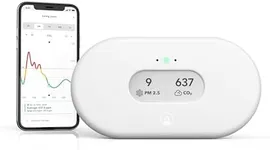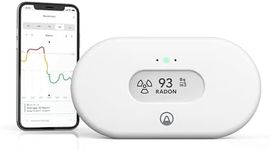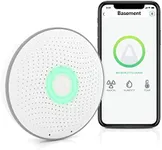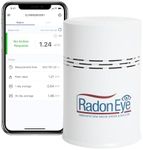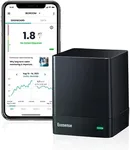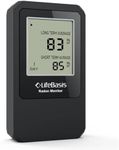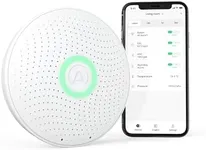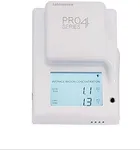Buying Guide for the Best Radon Monitor
Choosing a radon monitor is an important step in ensuring the safety of your indoor environment, as radon is a naturally occurring radioactive gas that can pose health risks over time. When selecting a radon monitor, it's essential to understand the key features and specifications that affect accuracy, ease of use, and suitability for your specific needs. By focusing on the most relevant specs, you can confidently pick a device that will help you monitor radon levels effectively in your home or workplace.Detection MethodThe detection method refers to the technology the radon monitor uses to sense and measure radon gas. Common methods include passive detectors (like charcoal canisters) and active electronic monitors. Passive detectors are typically used for short-term testing and require lab analysis, while active monitors provide continuous, real-time readings. If you want ongoing monitoring and instant results, an active electronic monitor is usually the best choice. For a one-time check, a passive detector may suffice.
Measurement RangeMeasurement range indicates the lowest and highest levels of radon the device can accurately detect, usually measured in becquerels per cubic meter (Bq/m³) or picocuries per liter (pCi/L). A wider range allows the monitor to detect both very low and very high radon concentrations. For most homes, a standard range is sufficient, but if you suspect unusually high levels or want to use the monitor in different environments, look for a device with a broader range.
Accuracy and SensitivityAccuracy and sensitivity describe how closely the monitor's readings match the actual radon levels and how well it can detect small changes. Higher accuracy and sensitivity mean more reliable results, which is crucial for health and safety decisions. Devices often list their margin of error or percentage of accuracy. If you need precise data for health reasons or regulatory compliance, prioritize monitors with higher accuracy ratings.
Response TimeResponse time is how quickly the monitor can provide an initial reading and update its measurements. Some monitors give results within hours, while others may take days to provide a reliable average. If you need quick feedback, such as after making changes to your ventilation, choose a monitor with a faster response time. For long-term monitoring, a slower response may be acceptable.
Data Logging and ConnectivityData logging refers to the monitor's ability to store historical radon readings, while connectivity covers features like Bluetooth, Wi-Fi, or app integration. These features make it easier to track trends over time and access your data remotely. If you want to monitor radon levels over weeks or months, or if you prefer checking results on your phone or computer, look for a monitor with robust data logging and connectivity options.
Power SourceThe power source can be batteries, plug-in, or both. Battery-powered monitors offer flexibility in placement and are useful for temporary setups, while plug-in models are better for permanent, long-term monitoring. Consider how and where you plan to use the monitor to decide which power option fits your needs best.
Ease of UseEase of use covers how simple the monitor is to set up, operate, and interpret. Some monitors have clear displays and straightforward controls, while others may require more technical knowledge. If you prefer a hassle-free experience, look for a monitor with intuitive operation and easy-to-read results.
